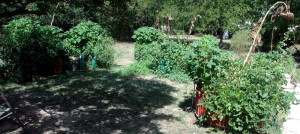 Even in late August, Keyhole Farm’s keyhole gardens are flourishing. Greenery is everywhere!
Even in late August, Keyhole Farm’s keyhole gardens are flourishing. Greenery is everywhere!
In early spring, we had gone through the lettuce, cabbage, spinach, Swiss chard, asparagus scenario, of course topped with gigantic sunflowers. They and numerous other crops (corn, potatoes, tomatoes, green beans, squash, etc….) were harvested in mid-summer and transplanted with mainly black-eyed peas and okra which tend to withstand the very hot Texas heat quite well.
We are still growing squash, zucchini, banana melons, cantaloupe, and many watermelons, plus abundant tomatoes and chard, as well.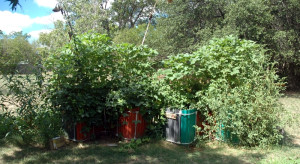
Even in one day’s time, certain crops erupt ready to be picked. A two-inch okra in the morning grows to four- or five-inch by afternoon. Peas in the shell also get fat in a day’s time quite often. We plant our crops thick (planting the seeds about three inches apart, in a kind of grid format). This means that when they grow really big there are gigantic leaves to go through to find the pickings, which are sometimes overlooked but seen when they are very large.
 Intermingled on this update are a few random photos of the gardens as they were on Aug. 26, plus some pictures near the bottom that were taken about two weeks ago. Click on photos to enlarge them.
Intermingled on this update are a few random photos of the gardens as they were on Aug. 26, plus some pictures near the bottom that were taken about two weeks ago. Click on photos to enlarge them.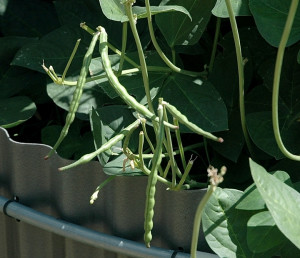
I have been involved in keyhole gardening for about six years now, and it still amazes me the thickness and lushness of these gardens, which require minimal watering.
I had mentioned in a previous post about how squash bugs raided my keyholes in May (they usually come around in early June). After I pulled those plants and transplanted, no squash bugs. Maybe it is the heat.
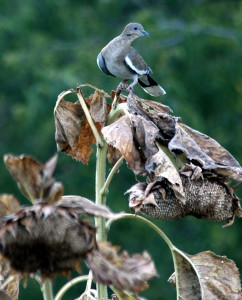 After I harvested the sunflowers (about 30 thick stalks), I did leave a few in the ground. Birds like to fly onto them and peck at the sunflowers, which is interesting to watch.
After I harvested the sunflowers (about 30 thick stalks), I did leave a few in the ground. Birds like to fly onto them and peck at the sunflowers, which is interesting to watch.
 The butterflies have pretty much vanished, but I do enjoy watching the occasional dragonfly. Bees come early in the morning, and later in the day red wasps and yellow jackets take their turns wandering around. I generally do my picking early (bees don’t bother me) and later when the sun sets (it’s cooler and the wasps are finishing up).
The butterflies have pretty much vanished, but I do enjoy watching the occasional dragonfly. Bees come early in the morning, and later in the day red wasps and yellow jackets take their turns wandering around. I generally do my picking early (bees don’t bother me) and later when the sun sets (it’s cooler and the wasps are finishing up).
We have had a few grasshoppers, mainly measuring about three inches in length. If you can get your crops big enough, they don’t really pose much of a problem. It’s when plants are just starting out that grasshoppers can be devastating. At least that’s been my experience so far.
Something new I experienced this year happened about two weeks ago. Something raided a few of my watermelons that overflowed onto the ground. I had noticed that out of this particular vine I had one large (thumpably correct) yellow-meated watermelon, one half that size, and one just a little smaller. Plus there were four just starting out (golf-ball to baseball-size). One day when I was stepping over the vine I had trouble locating the smaller melons, but thought I was just looking in the wrong place.

The next day, the three bigger melons had been eaten into, something with big teeth (you could see the marks on the rind). I went ahead and picked the big melon (it was okay), but the other two were about half eaten and the four little ones, with closer inspection, had indeed vanished. In our neighborhood, we have seen skunks and opossums from time to time, and an occasional loose dog roams around sometimes. The culprit had the earmarks of a raccoon, but I had never seen any around. My only other possible choice was perhaps a six-foot grasshopper.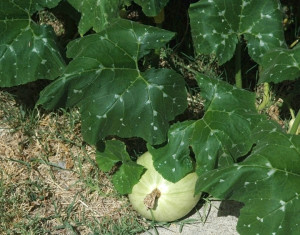
The next morning, the middle-sized melon, still on the ground, had been chewed on again, so this was probably not a transient creature. It was driving me batty not knowing what it was, so I set a live trap and put the remainder of the middle-sized melon in it on the bait platform and removed the smaller crunched-on melon. Morning came…nothing in the trap. The next morning, however, I had caught him. It was a cute little opossum.
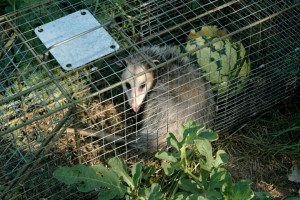 I, of course, decided to let him go. Getting him out of the trap cage was a tricky experience since it was difficult to open the entryway with the heavy watermelon bait at the other end, this weight forcing the doorway toward the closed position. Too, he was pointing in the wrong direction and apparently didn’t know that behind him lay freedom. When I tried to move the cage, he simply moved more toward the back, his rear pointing toward the exit. I tapped on a metal plate and he took two tiny steps backward, not enough. He was staring at me intently and I was talking to him very nicely and quietly, telling him he was a good possum and not to worry (I know, weird), but he should stay away from my garden (I don’t know if he understands English, so I tried some mental telepathy, too).
I, of course, decided to let him go. Getting him out of the trap cage was a tricky experience since it was difficult to open the entryway with the heavy watermelon bait at the other end, this weight forcing the doorway toward the closed position. Too, he was pointing in the wrong direction and apparently didn’t know that behind him lay freedom. When I tried to move the cage, he simply moved more toward the back, his rear pointing toward the exit. I tapped on a metal plate and he took two tiny steps backward, not enough. He was staring at me intently and I was talking to him very nicely and quietly, telling him he was a good possum and not to worry (I know, weird), but he should stay away from my garden (I don’t know if he understands English, so I tried some mental telepathy, too).
Finally, I decided to lift and tilt the cage and force him to slide out, which he did. He stood there on the bare ground, stunned, still staring at me, then he let out a hiss, like a cat, and took off running toward a thicket.
 I am now monitoring my watermelons again, the newest crop, and am considering putting some kind of wire cover around them. Maybe the opossum was traumatized enough by being caught that he won’t come back. Time will tell. We have had possums for years on our property, but this was the first time one got into my gardens. It was very hot and dry those days, so he could have just been thirsty. Who knows?
I am now monitoring my watermelons again, the newest crop, and am considering putting some kind of wire cover around them. Maybe the opossum was traumatized enough by being caught that he won’t come back. Time will tell. We have had possums for years on our property, but this was the first time one got into my gardens. It was very hot and dry those days, so he could have just been thirsty. Who knows?
I couldn’t be mad at him. Out of the other 100 or so gardens in the city, he chose mine. I figured he knew quality when he found it, especially since he returned to it time and again. Too, I had not posted signage prohibiting opossums from dining here, so how was he to know?
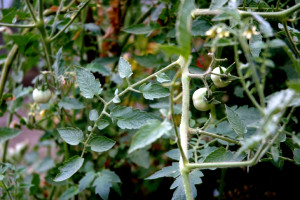 Some might consider the possum intrusion a negative experience, but I add it to my list of gardening adventures. It is something I will always remember and maybe learn from. It is very easy to become one with nature when spending time with the keyholes. There is satisfaction in planting crops that really grow big, while at the same time conserving water and eliminating a lot of the physical efforts required of traditional gardens.
Some might consider the possum intrusion a negative experience, but I add it to my list of gardening adventures. It is something I will always remember and maybe learn from. It is very easy to become one with nature when spending time with the keyholes. There is satisfaction in planting crops that really grow big, while at the same time conserving water and eliminating a lot of the physical efforts required of traditional gardens.
This time of year, it is almost like each keyhole garden is its own little forest or oasis, sitting upon dry, baked earth. It is mesmerizing and a rewarding escape to push through the stalks and vines in search of that perfect tomato and to recognize okra ready to pick.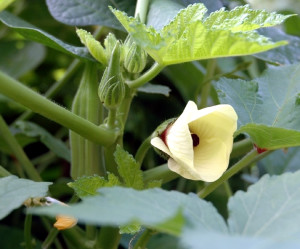
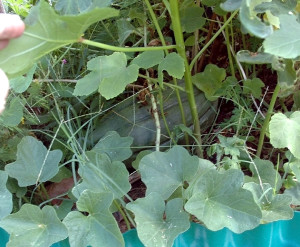 I like to watch the flowering of the plants because that usually means crops are about to form. I highly recommend this experience to everyone.
I like to watch the flowering of the plants because that usually means crops are about to form. I highly recommend this experience to everyone.